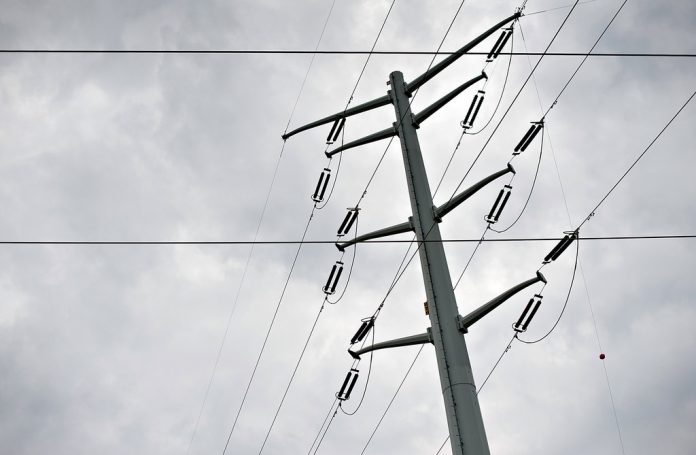
WARWICK – Rhode Island homes and businesses will see a mix of increases and decreases in their electric and natural gas bills over the next three years under a utilities rate package and power grid modernization program approved Friday by state regulators.
The three-member Public Utilities Commission voted unanimously to approve a settlement agreement for new electric and gas distribution rates for National Grid Rhode Island, the state’s largest utility company.
The rate changes, which go into effect Sept. 1, will slightly increase most of Rhode Island’s monthly electric and gas bills. Others, especially low-income households, will see decreases. The new rates mainly are to cover the company’s operating costs.
Over the first year of the new rates, National Grid’s small commercial and industrial customers will see a 4 percent increase in their electric bills and a 4.6 percent decrease in their gas bills.
Medium-size industrial customers will see increases between 1 percent and 3 percent in their electric bills, while medium-size commercial and industrial customers will see a 1 percent increase in their gas bills.
Large industrial customers will see 0.8 percent to 3 percent increases in the electric bills, while large commercial and industrial customers will see up to a 1 percent increase in their gas bills.
In addition, extra-large commercial and industrial customers will see a 1 percent increase in their gas bills, according to state figures.
Commercial and industrial customers will see smaller increases in their electric bills in the second and third years, compared with the increases during the first year.
Commercial and industrial customers will see increases of less than 2 percent in the gas bills in the second and third years, according to state utility regulators.
State energy and utility officials praised the agreement, saying it includes measures that will help transform Rhode Island’s power grid to make use of more so-called “clean energy” sources in the future.
“Today’s [commission] order is another significant step in Rhode Island’s journey to modernize the electric grid so our residents, businesses, and communities can benefit from cleaner, lower-cost energy sources,” said R.I. Division of Public Utilities & Carriers Administrator Macky McCleary.
Beginning in September, households will see an average increase of 3.5 percent in their electric bills and an average increase of less than 1 percent in their gas bills.
Based on homes using 500 kilowatt-hours of electricity per month, the numbers cover the first year of the three-year plan.
In the second and third years of rate changes, a typical household will see increases of less than 1 percent in their electric bills and increases between 1 percent and 2 percent in their gas bills.
In the first year, low-income households will see an average decrease of 16.2 percent in their electric bills and an average decrease of 22.8 percent in their gas bills.
To qualify for low-income status, households must be receiving supplemental social security income and be eligible for the federal low-income home energy assistance program, or any of the following state programs: Medicaid, Food Stamps, General Public Assistance, or Family Independence Program.
The division said the rate agreement will result in nearly $54 million less in revenues for National Grid, compared with what the company would have collected from ratepayers under its original rate requests filed last November.
With the three-year rate changes approved Friday, National Grid’s overall revenue from its electric and gas distribution businesses are projected to be limited to increases of 4.3 percent and 2.7 percent, respectively.
The agreement also calls for National Grid to make certain investments in electric transportation, energy storage, and a range of information systems “that will enable the electric grid to be more responsive to customer needs,” the division said.
The approved deal lowers National Grid’s so-called “sharing threshold,” also known as return on equity, which acts like a permitted profit margin. The agreement lowers the threshold to 9.275 percent from 9.5 percent. The company originally sought to raise the threshold to 10.1 percent.
As spelled out in the agreement, when the company’s base earnings exceed 9.275 percent, half of the excess revenue can be retained by the company, typically used for shareholders’ dividends, but half must be “rolled back” into the grid system. Such rollbacks are typically used to maintain or upgrade the grid or to provide some form of relief for ratepayers.
In addition, when base earnings exceed 10.275 percent, 75 percent of the excess revenue must be rolled back into the system, with only 25 percent going to the company or shareholders.
Following the commission’s approval, National Grid said the rate changes and grid modernization plan “provides a fair and reasonable outcome for our customers, the company, and all those involved.”
The agreement also requires National Grid to use all its savings from the large cut to the federal corporate tax rate during the three-year rate plan from September 2018 to September 2021 to offset costs to ratepayers.
However, Gov. Gina M. Raimondo and Lt. Gov. Daniel McKee called on National Grid to return to ratepayers $7.9 million in “over-collections” made since the tax rate cut went into effect last January.
National Grid and the division said they intend to arrive at a figure for the company’s tax savings for the period from January through August and agree on a way to provide relief to ratepayers.
“The money belongs to Rhode Islanders, and National Grid needs to return every dollar to ratepayers – quickly,” Raimondo said.
“While I’m pleased that National Grid has reduced their rate increase request in light of their tax cut going forward,” she added, “they must also immediately reimburse ratepayers for these over-charges” going back to January.
Advocates for environmental protection and clean energy applauded the agreement.
“This is an exciting step for the Ocean State,” said Janet Gill, executive vice president of the Northeast Clean Energy Council. “The move to a multi-year rate plan that starts to measure utility performance in key areas such as system efficiency, energy storage, and enabling infrastructure for electric vehicle charging recognizes that the regulatory framework and utility business model need to evolve together.”
“Rhode Island has jumped into a leadership role among New England states seeking to reform utility regulations,” said Daniel Sosland, president of Acadia Center, a clean energy research and advocacy group. “Embracing the changes needed to modernize the energy system will deliver large economic, public health, consumer, and environmental benefits to all Rhode Islanders.”
Scott Blake is PBN staff writer. Email him at Blake@pbn.com.












